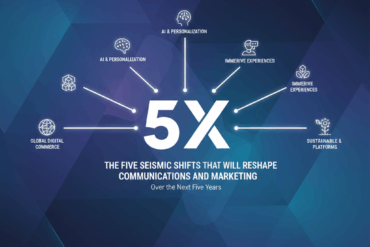By Jill Smith,
The web just changed with what we are calling ‘Content Independence Day.’ Jill Smith, CEO of Iris Americas, asks what the future holds for brands and agencies.
Another reset just hit the internet – and if you’re in charge of brand marketing or working inside an agency, you’ll want to pay close attention.
On July 1, Cloudflare, which powers about 20% of global web traffic, rolled out a bold new stance: default blocking of AI bots like OpenAI’s GPTBot and Anthropic’s Claude unless sites explicitly allow or monetize access.
They’re calling it Content Independence Day.
Why now?
Because the old exchange, brands create content for free, search engines reward them with traffic, which is broken. And for brands that rely on discoverability, digital storytelling, and culture-led participation, this is more than a tech policy shift. It’s a new phase of the internet.
What changed?
Until recently, AI companies were hoovering up the internet to train their models, often without attribution, permission, or compensation. Cloudflare’s data showed just how lopsided this relationship had become: OpenAI, for example, sends 750 times more crawlers than clicks.
That means brands and publishers have been fuelling AI models – training them on everything from product pages to purpose campaigns – without seeing anything back.
So Cloudflare flipped the script.
Now, unless a brand or publisher explicitly opts in, those AI bots are blocked. For brands, this opens up the possibility to charge for content access, decide which AI models can use their IP, and rethink what content is for in an AI-first web.
The rules of digital engagement are being rewritten
Brands have long invested in content designed to convert – blogs, landing pages, FAQs, social storytelling. But as search gets replaced by generative answers, that content is increasingly being scraped, summarized, and served – without clicks, without context, and without control.
That’s a problem. Because when your brand story is delivered by a model that’s ingested but not attributed, you risk dilution at best and distortion at worst.
And for agencies, this moment matters just as much. Our job has always been to connect brands with people. But now, the middle layer – the AI systems filtering those connections – needs to be understood, respected, and yes, negotiated with.
What can brands do?
It starts by getting strategic about what you publish, where, and how it’s structured. Here are four moves smart marketers should be considering right now:
- Make your content AI-ready
That means clear structure, strong metadata, consistent branding and sources that establish authority. If your content appears in AI answers, ensure it’s trustworthy and traceable.
- Reclaim value from your IP
Whether you block, charge, or allow AI access to your content, the key is having a plan. Platforms like Cloudflare’s new “Pay-Per-Crawl” system offer a path to monetize high-value content and insights.
- Create distinctive, original content
The web doesn’t need more of the same. AI models love unique, in-depth material – case studies, research, and cultural commentary. These are the pieces worth protecting, sharing and potentially licensing.
- Embrace culture over clicks
At Iris, we’ve long championed participation as the most powerful way for brands to show up. This shift reinforces that. Content that sparks community, co-creation, or cultural relevance is still the most valuable kind, to people and platforms.
What’s the role of agencies now?
If you’re advising clients, this is the time to double down on your value.
Agencies must help brands audit their content strategies through an AI lens. That means asking: Which assets are most valuable? Who’s using them? Are we being credited? Are we being compensated?
Beyond that, we need to help brands define their AI stance – not just internally, but in a way that aligns with consumer trust. That might mean licensing certain content, blocking others, or creating machine-readable hubs of high-quality IP.
We also need to build creative systems that flex across this new landscape. Campaigns must not only deliver reach but be structured in ways that support both human storytelling and machine interpretation. That’s where participation-led thinking shines.
Why this matters now
We’re entering a web where the most powerful engines of discovery aren’t browsers or apps – they’re bots. And those bots are deciding which brands matter, often invisibly.
If you’re not managing how your content gets surfaced, summarized, or sold to those systems, you’re not managing your brand.
The move by Cloudflare is a wake-up call. It puts control and responsibility back into the hands of content creators, brands, and their partners. The question is: what are we going to do with it?
This is a chance for brands to lead with clarity. For agencies to guide with insight. And for all of us to shape a web that works for the people and ideas that power it, not just the machines that scrape it.
Feature image credit: Adobe Stock
By Jill Smith,
Get in touch with Jill on LinkedIn.
Jill Smith is the CEO of Iris Americas, leading the agency’s operations across key locations including New York, San Francisco, Atlanta, Boston, Toronto, and São Paulo. A ten-year veteran of Iris and its parent company, Cheil, Jill began her career in the art world, working in the nonprofit arts sector in Montreal before moving to New York, where she founded her own boutique creative agency, Mayonnaise. Continue the conversation with her on LinkedIn.

